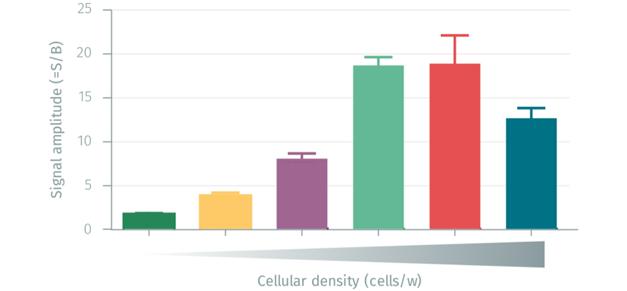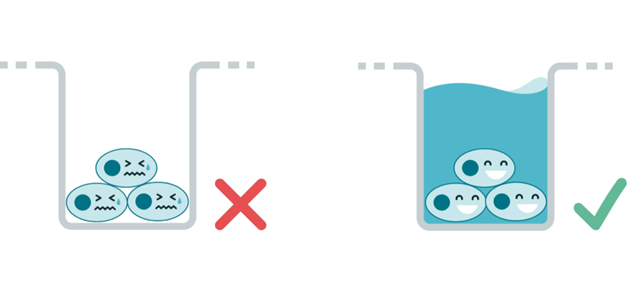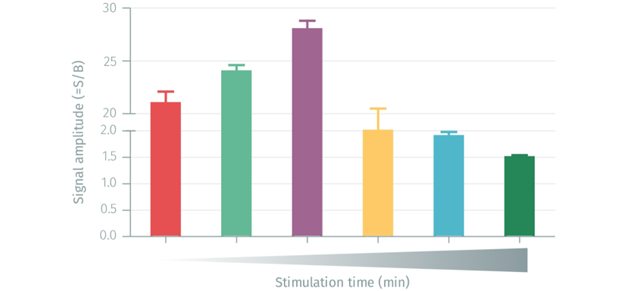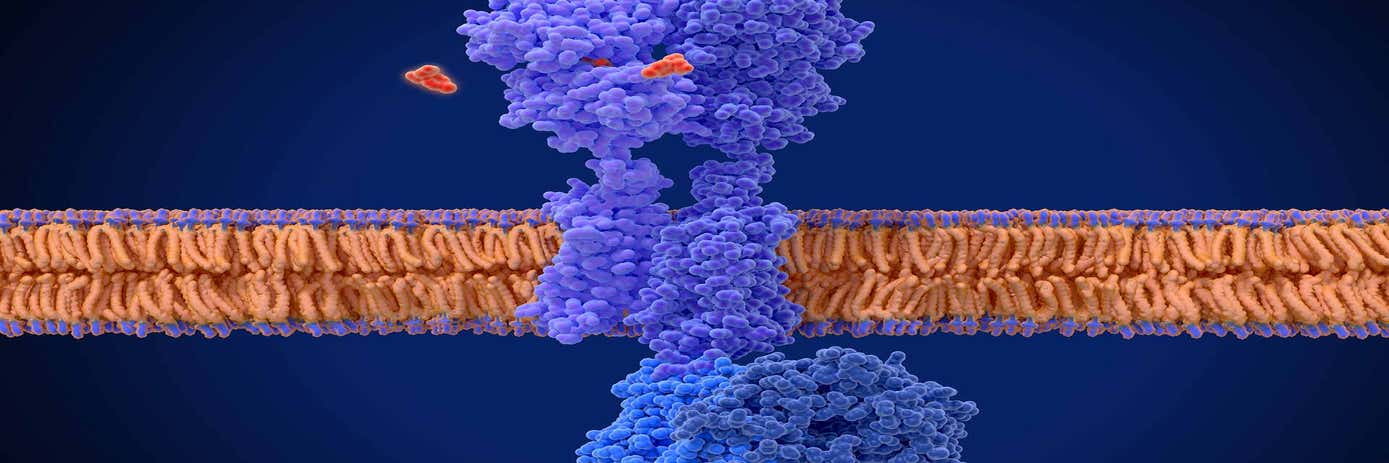
Good reagents are necessary, but not always enough to obtain the best results. Phospho-ERK1/2 kit
 HTRF Human and Mouse Phospho-ERK (Thr202/Tyr204) Detection Kit, 500 Assay Points
Discover
is robust and easy to use. Of course, proper preparation is the key to obtaining optimal results.
HTRF Human and Mouse Phospho-ERK (Thr202/Tyr204) Detection Kit, 500 Assay Points
Discover
is robust and easy to use. Of course, proper preparation is the key to obtaining optimal results.
To guide you to success, here are 5 tips to follow when setting up your phospho-ERK assay.
ERK, which means Extracellular Signal-Regulated Kinases, play a role in proliferation, survival, differentiation, and cell migration. ERK 1/2 are activated by phosphorylation on a threonine and a tyrosine. The study of these kinases can help the understanding of diseases like cancer.

Tip 1: Lower cell density for better signal
Cells can either be valuable or else can behave like salt: too much of it will deteriorate taste of your food… In cell culture, this equals the hook effect. If there are too many cells, the signal will decrease because of a lack of one reagent. Finding the perfect quantity of cells is necessary to obtain the best assay outcomes. Detections of p-ERK with our phospho-ERK1/2 kit per well have been performed using a range of cellular densities, and thanks to these experiments the optimal quantities were found.

Would you like to know about these densities? Don’t hesitate, have a look at our technical note!
Tip 2: Evaluating serum starvation conditions
For most cells, serum is required for growth and attachment to the plate. During plating and the stimulation step, cells are deprived of serum and this deprivation may alter their response to the compound. Evaluating this impact is the key to setting up your experiment properly!
So our team evaluated this impact by measuring p-ERK detection using various cell plating conditions (no serum starvation, overnight serum starvation, serum starvation for two hours). The experiment showed that too long a serum starvation time or a no serum starvation doesn’t lead to the best p-ERK detection.
Tip 3: Distributing compound in cell culture medium
Cells without any medium means you have stressed cells. And we all want to avoid that! So the key point here is: never leave cells “naked” in the air. We tested the effect on p-ERK detection, and the difference was huge. In fact, an absence of medium induced a high basal activity, which has a negative effect on p-ERK detection. On the other hand, with an addition of compound in the presence of cell culture medium, we could observe a low basal activity and a response was detected.
So, as you’ve obviously understood, a direct compound addition in the presence of cell medium is mandatory for the correct detection of dose response.

Tip 4: Stimulating blindly leads to poor results
Stimulation is a major parameter in GPCR signaling experiments, and it can be managed in different ways. Signal amplitude is affected by stimulation time. Testing different times and temperatures during the stimulation step is another key to optimizing results.
In our technical note, you will find results which highlight the optimal stimulation time when at 37°C. We chose to evaluate stimulation times ranging from 2 to 60 minutes. The outcomes were clear: the signal amplitudes decreased by stimulating cells for times which were too short or too long.

Tip 5: Managing your lysis step
The time between the removal of the GPCR stimulation buffer and adding the lysis buffer can affect the signal response. Our team has shown that a waiting time before the addition of lysis buffer has a detrimental effect on the amount of ERK phosphorylation detected.
So, follow the directions in the product insert and apply the tips given in this technical note, – you will obtain the best results with our HTRF™ Advanced phospho-ERK1/2 kit.
Now, it is up to you!
For research use only. Not for use in diagnostic procedures.
The information provided above is solely for informational and research purposes only. Revvity assumes no liability or responsibility for any injuries, losses, or damages resulting from the use or misuse of the provided information, and Revvity assumes no liability for any outcomes resulting from the use or misuse of any recommendations. The information is provided on an "as is" basis without warranties of any kind. Users are responsible for determining the suitability of any recommendations for the user’s particular research. Any recommendations provided by Revvity should not be considered a substitute for a user’s own professional judgment.

































